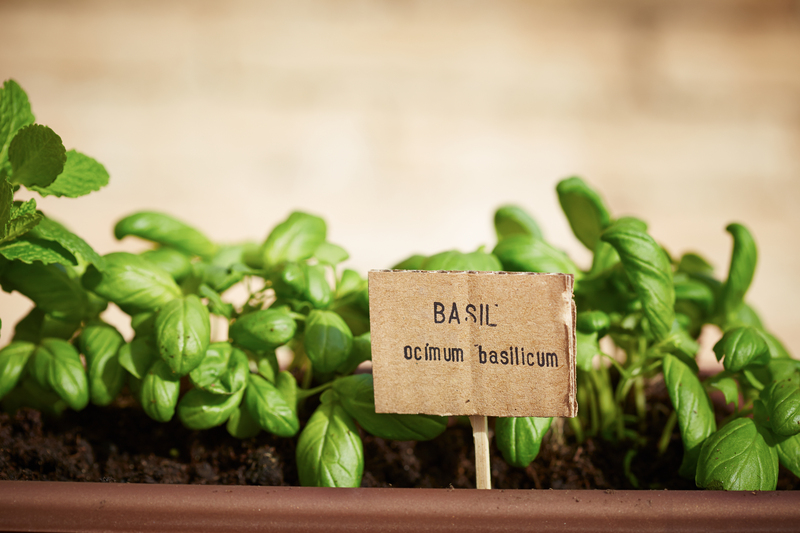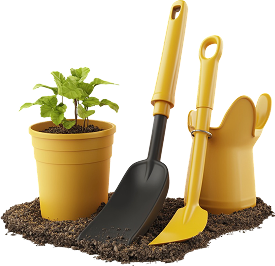New to Lawn Care? These Secrets Will Set You Up for Success
Are you new to lawn care? Maybe you've just moved into a new home with a lawn, or perhaps your yard has been neglected for too long. Either way, caring for grass and creating a lush green carpet isn't as easy as it looks. With a few key lawn care secrets up your sleeve, you can quickly transform your yard into the envy of the neighborhood. In this comprehensive guide, we'll reveal tips, tricks, and expert insights so you can grow a healthy, vibrant lawn--even if you're just starting out.
Why Lawn Care Matters: The Benefits of a Healthy Lawn
A beautiful yard isn't just about aesthetics. A well-maintained lawn can:
- Increase your property value
- Reduce soil erosion
- Improve air quality
- Provide a safe and enjoyable space for your family
With these benefits, investing in proper lawn maintenance is a smart move for every homeowner.

The Crucial Elements of Successful Lawn Care
Starting a thriving lawn isn't about luck--it's about understanding the essentials. Here's what every beginner lawn care enthusiast should focus on:
- Soil health
- Proper mowing practices
- Watering correctly
- Fertilizing at the right times
- Weed and pest control
1. Test and Improve Your Soil
The foundation of every great lawn is healthy soil. Before you do anything else, test your soil's pH and nutrient levels. You can purchase a simple test kit at your local garden center or send a sample to your county extension office.
Understanding Soil pH
Grass grows best in soil with a pH of 6.0 to 7.0. If your soil is too acidic or too alkaline, your lawn will struggle to absorb nutrients, no matter how much you fertilize.
Steps to Improve Your Soil
- If the soil is too acidic (pH below 6.0): Add lime to raise the pH.
- If the soil is too alkaline (pH above 7.0): Add sulfur to lower the pH.
- Incorporate organic matter: Compost, peat moss, or well-rotted manure improves soil structure, drainage, and nutrient content.
2. Choose the Right Grass for Your Region
Not all grass types thrive everywhere. Picking the right grass for your climate is a game changer for beginner lawn care.
- Cool-Season Grasses (e.g., Kentucky bluegrass, fescue, ryegrass): Thrive in northern regions and do best in spring and fall.
- Warm-Season Grasses (e.g., Bermuda, Zoysia, St. Augustine): Ideal for southern climates and peak during the summer.
When in doubt, consult with your local nursery--they'll know exactly which type flourishes in your area.
3. Master the Art of Mowing
Mowing may seem straightforward, but doing it right is one of the most important secrets to lawn care success. Here's how:
Key Mowing Tips
- Don't Cut Too Short: Never remove more than one-third of the grass blade in a single mow. Cutting too short (scalping) stresses the grass and encourages weeds.
- Keep Blades Sharp: Dull mower blades tear the grass, making it susceptible to disease. Sharpen blades several times throughout the season.
- Mow When Dry: Mowing wet grass leads to uneven cuts and clumping.
- Change Mowing Direction: Varying your mowing pattern helps promote upright growth and prevents ruts.
Pro Tip: In hot weather, keep your grass a little longer to shade the soil, conserve moisture, and protect root systems.
4. Water Like a Pro
New to lawn maintenance? One of the most common mistakes is either overwatering or underwatering. Healthy lawns need deep, infrequent soaking--not daily sprinkles.
Watering Best Practices
- Water early in the morning to reduce water loss from evaporation.
- Soak the soil to a depth of 6 inches, which encourages deep root growth.
- Generally, lawns require about 1-1.5 inches of water per week. Rain counts toward this total!
- Avoid watering in the evening, as damp conditions overnight promote fungus and disease.
Install a rain gauge or simply use an empty tuna can to measure how much water your sprinkler delivers.
5. Fertilize Thoughtfully
Your lawn needs nutrients to flourish. But when, what, and how much fertilizer to apply depends on your grass type and location.
DIY Lawn Fertilizing Tips
- Use slow-release fertilizers to feed your lawn over time and minimize runoff.
- Fertilize cool-season grasses in spring and fall; fertilize warm-season grasses in late spring and summer.
- Follow label instructions carefully--over-fertilizing can burn your lawn and pollute waterways.
- Consider organic options like compost, which improves the soil while feeding your grass.
Pro Secret: Perform a soil test before fertilizing. This ensures you provide what your lawn actually needs, saving time, money, and resources.
6. Control Weeds and Lawn Pests
Weeds, insects, and diseases are the sworn enemies of a healthy lawn. Early and consistent management is vital.
Secrets for Effective Weed and Pest Control
- Mow high and healthy: Taller grass shades the soil, reducing the opportunity for weeds to germinate.
- Apply pre-emergent weed control in early spring to target crabgrass and annual weeds before they sprout.
- Hand-pull weeds when possible, especially before they go to seed.
- Address pests early: Look for brown patches, chewed blades, or increased bird activity (which may signal grubs).
- Choose targeted treatments: Use insecticides and herbicides only where needed and always follow directions.
Expert Lawn Care Tip: A thick, healthy lawn is your best defense against weeds and pests.
7. Aerate and Dethatch When Necessary
Even the healthiest lawns can suffer from compacted soil or excess thatch (a thick layer of roots and stems above the soil line).
When and How to Aerate
- Aerate once a year (preferably in the spring or fall) if your soil is heavy or your yard sees a lot of foot traffic.
- Use a core aerator to remove plugs of soil, allowing water, air, and nutrients to penetrate deeper.
Dethatching Tips
- Dethatch if the layer is over 1/2 inch thick. This helps water and nutrients reach the roots.
- Use a dethatching rake or rent a power dethatcher for larger lawns.
Not every lawn will need these steps every year, but watch for signs of stress, pooling water, or excessive thatch.
8. Seasonal Secrets for Year-Round Lawn Success
Each season brings new challenges. Stay ahead by tailoring your lawn care schedule accordingly:
Spring Lawn Care
- Rake leaves and debris to allow sunlight and air circulation.
- Apply pre-emergent weed control.
- Fertilize if soil temperatures are above 55?F.
Summer Lawn Care
- Mow high and water deeply.
- Monitor for pests and diseases.
Fall Lawn Care
- Aerate and overseed, especially if your lawn has bare spots.
- Fertilize cool-season grasses.
Winter Lawn Care
- Minimize traffic on frozen grass.
- Remove heavy snow piles to prevent turf damage.
Lawn Care Secret: Set calendar reminders so you don't miss critical seasonal tasks!
9. Overseeding for a Thicker, Greener Lawn
Is your grass thin or patchy? Overseeding is the secret weapon for a lusher yard.
How to Overseed
- Mow shorter than usual to let the new seed reach the soil.
- Rake or dethatch to expose bare spots.
- Spread high-quality grass seed evenly and water gently but consistently until germination occurs.
Pro Tip: Combine overseeding with aeration for best results--the newly seeded grass will quickly fill the holes left by aeration.
The Most Common Lawn Care Mistakes (& How to Avoid Them)
- Neglecting soil testing. You'll never know what your lawn needs without it.
- Overwatering or underwatering. Monitor rainfall and irrigation to avoid both extremes.
- Mowing too short. Remember the one-third rule!
- Ignoring weeds and pests until it's too late. Early action saves a lot of trouble.
- Skipping regular maintenance. Consistent care yields consistent results.
Essential Tools Every New Lawn Owner Needs
If you're just beginning your lawn care journey, these are the basics:
- Lawn mower (reel, electric, or gas based on your yard size)
- String trimmer for edges and tight corners
- Garden rake for debris and thatch
- Spreader for seed and fertilizer
- Hose and sprinkler for even watering
- Soil test kit
Optional "Pro" Tools: Aerator, dethatcher, wheelbarrow, and leaf blower.

Frequently Asked Questions about Lawn Care for Beginners
How often should I mow my lawn?
Most lawns need mowing once per week during the growing season, but always follow the "one-third" rule for blade length.
Is it better to water a lawn in the morning or evening?
Always water early in the morning to avoid disease and wasted water through evaporation.
How do I revive a dying lawn?
Test the soil, water smartly, overseed bare patches, and fertilize according to your grass type--be patient! With the right care, you'll see improvement in a few weeks.
Final Thoughts: The Secret to Lawn Care Success Is Consistency
Every successful lawn owner knows that consistency is the key. Stay on top of these seasonal secrets, use the right tools, and most importantly, observe your lawn's needs. Small problems are always easier to fix right away than after they've spiraled out of control.
By following these new lawn care tips and advice, you'll be well on your way to a lush, green, healthy yard--even if you're just getting started. Remember: There is no "one-size-fits-all" solution, but with patience and regular attention, your dream lawn is within reach.
Ready to roll up your sleeves and get started? Your beautiful lawn journey begins today!
